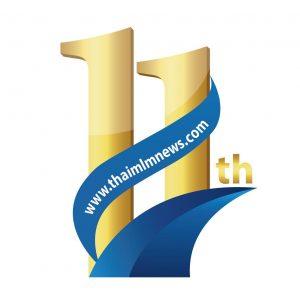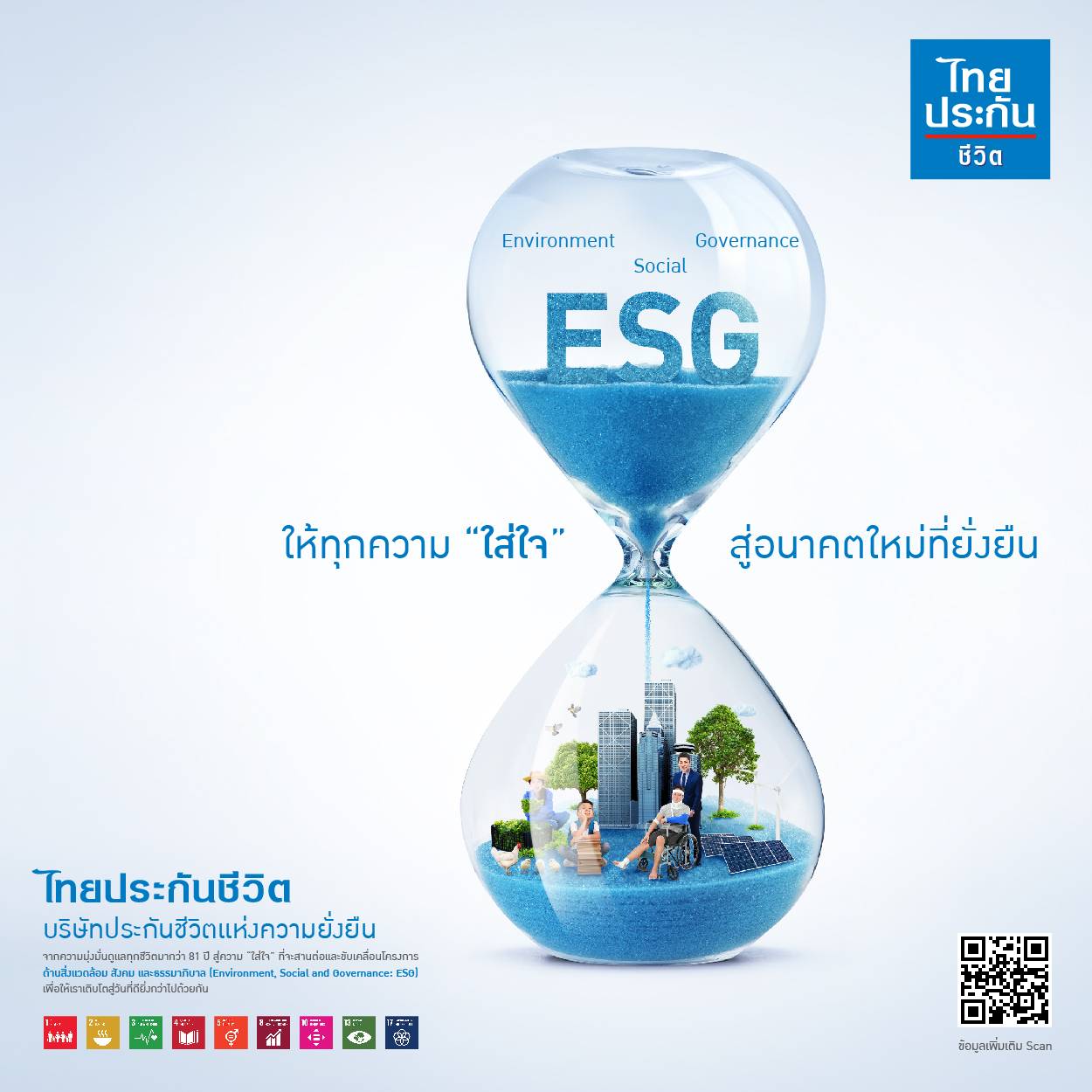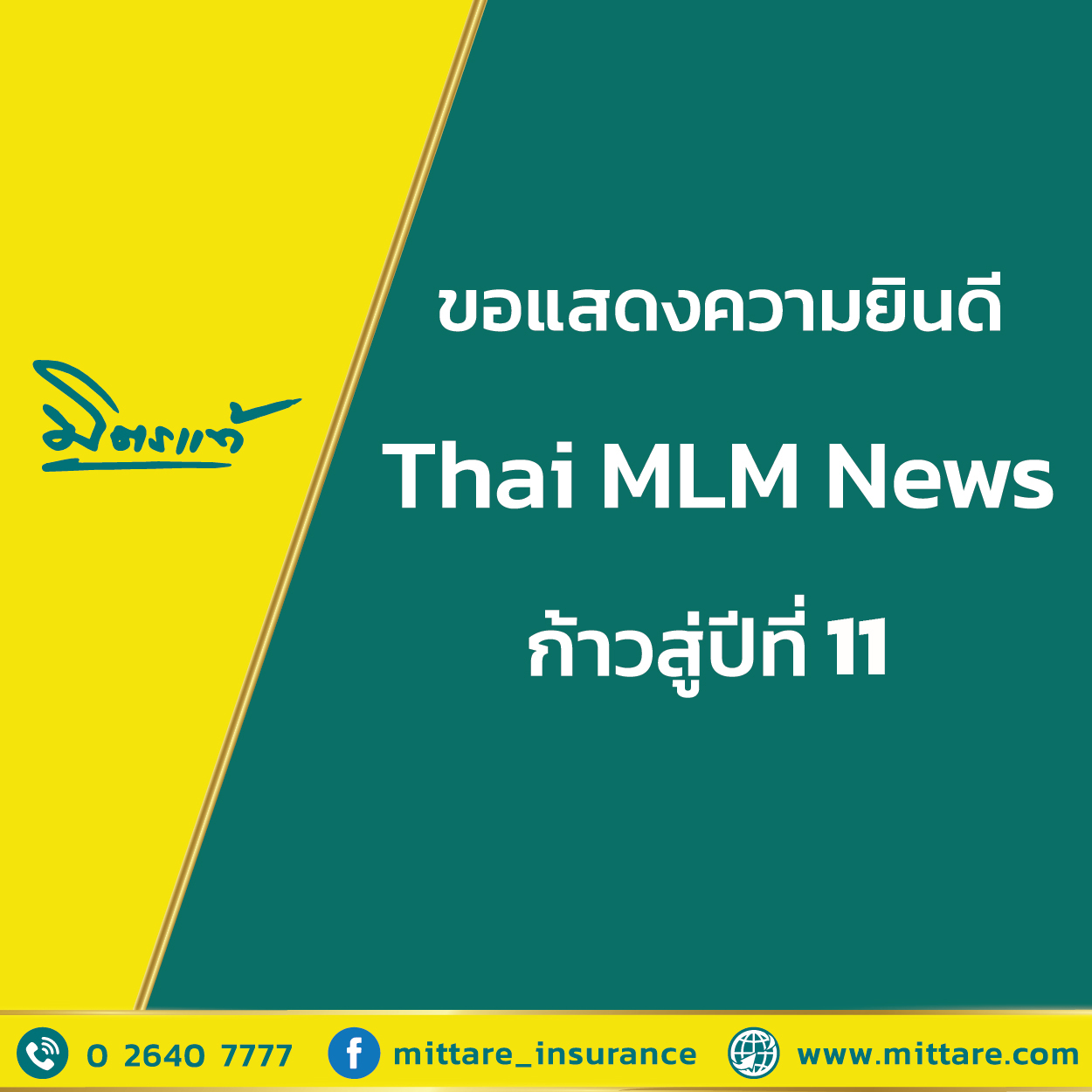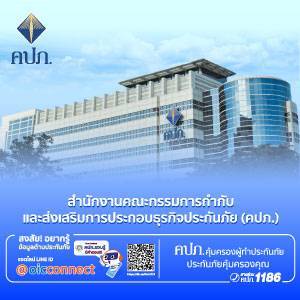KBank Private Banking (เคแบงก์ ไพรเวทแบงกิ้ง) ชี้โอกาสลงทุนในกลุ่มเฮลท์แคร์ที่ผลการดำเนินงานดี แม้ในภาวะที่เงินเฟ้อปรับเพิ่มขึ้น ผ่านกองทุน K-GHEALTH ที่เน้นธีมการลงทุนระยะยาวจากนวัตกรรมทางการแพทย์ที่ก้าวกระโดด เพื่อตอบรับเทรนด์การดูแลสุขภาพจากทั่วโลก ในงานสัมมนาหัวข้อ “Healthcare as important as ever” โดยมี ศ.นพ.มานพ พิทักษ์ภากร หัวหน้าศูนย์วิจัยเป็นเลิศด้านการแพทย์แม่นยำ คณะแพทยศาสตร์ ศิริราชฯ ร่วมเสวนา เผยโควิด 19 ช่วยให้คนตระหนักความสำคัญของเทคโนโลยีทางการแพทย์ ที่ช่วยดูแลสุขภาพผู้คนให้ดีขึ้น มอง 8 นวัตกรรมที่จะเป็นเทรนด์แห่งอนาคต พร้อมด้วยผู้เชี่ยวชาญการลงทุนจาก JP Morgan Asset Management International Equity Group ประเมินกลุ่มเฮลท์แคร์ยังสร้างผลตอบแทนที่ดีให้กับนักลงทุนได้แม้ในช่วงที่เงินเฟ้อสูง โดยเลือกกลุ่มที่จะเข้าลงทุนให้เหมาะสม
นางสาวศิริพร สุวรรณการ Senior Managing Director – Financial Advisory Head Private Banking Group ธนาคารกสิกรไทย เปิดเผยว่า จากการแพร่ระบาดของโควิด 19 ตลอดระยะเวลา 2-3 ปีที่ผ่านมา ทำให้ในวันนี้เราได้ตระหนักว่าสิ่งที่สำคัญที่สุดคือการที่เราสามารถใช้ชีวิตได้อย่างมีความสุข ด้วยสุขภาพที่แข็งแรง ซึ่งนวัตกรรมหรือความก้าวหน้าทางการแพทย์ได้ผ่านการพิสูจน์แล้วว่าสามารถทำให้เราสามารถมีชีวิตที่ยืนยาวขึ้น ด้วยคุณภาพชีวิตที่ดีขึ้นเรื่อยๆ KBank Private Banking ในฐานะผู้เชี่ยวชาญและผู้ให้คำปรึกษาด้านการลงทุน จึงมองหาความเชื่อมโยงของการดูแลรักษาสุขภาพไปสู่โอกาสการลงทุน และพบว่า Healthcare Investment หรือ การลงทุนในกลุ่มเฮลท์แคร์ ผ่านกองทุน K-GHEALTH เป็นโอกาสการลงทุนที่ดีในระยะยาวได้ โดยเฉพาะอย่างยิ่งในสภาวะที่ตลาดลงทุนอยู่ภายใต้ความผันผวน
กองทุน K-GHEALTH เน้นลงทุนในหุ้นทางการแพทย์และการดูแลรักษาสุขภาพใน 4 กลุ่มหลัก ได้แก่
- Pharma – ยา ที่มีการพัฒนาให้สามารถรักษาได้อย่างตรงจุดหรือที่เรียกว่า Precision Medicine รวมไปถึงพัฒนาให้ใช้งานได้สะดวกสบายมากยิ่งขึ้น เช่น ในปัจจุบันมีการพัฒนาให้อินซูลินอยู่ในรูปแบบเม็ด
- Biotech – การนำเทคโนโลยีทางการแพทย์มาช่วยในการวินิจฉัยและรักษาโรคได้อย่างมีประสิทธิภาพและรักษาไปจนถึงระดับพันธุกรรม เช่น การรักษาโรคมะเร็งและโรคหัวใจ การพัฒนายาที่ป้องกันการเกิดหัวใจล้มเหลว ด้วยการเข้าไปสร้างกล้ามเนื้อหัวใจเพื่อเพิ่มความแข็งแรง ด้วยการแก้ปัญหาที่ต้นเหตุ
- Medical Tech – เทคโนโลยีทางการแพทย์ที่ใช้หุ่นยนต์ในการผ่าตัด การใช้ AI ช่วยประมวลผลข้อมูลทางการแพทย์ที่อยู่ในรูปแบบดิจิทัลมาใช้ในการวินิจฉัย เพิ่มความรวดเร็วและรักษาโรคได้อย่างทันท่วงที
- Healthcare Services – การเข้าถึงบริการทางสาธารณสุขในราคาที่เหมาะสม เช่น ระบบประกันสุขภาพที่มีบริษัทในเครือข่ายมาก ทำให้ผู้ป่วยสามารถเข้าถึงการรักษาได้ง่ายขึ้น

ศาสตราจารย์ นายแพทย์มานพ พิทักษ์ภากร หัวหน้าศูนย์วิจัยเป็นเลิศด้านการแพทย์แม่นยำ คณะแพทยศาสตร์ ศิริราชพยาบาล เปิดเผยว่า โควิด 19 ช่วยพิสูจน์ว่าความก้าวหน้าของเทคโนโลยีทางการแพทย์และการดูแลรักษาสุขภาพ ทำให้เราสามารถต่อสู้กับโรคระบาดได้ ตั้งแต่การวินิจฉัย การพยายามในการหาวิธีในการรักษา การป้องกัน รวมถึงช่วยเพิ่มประสิทธิภาพของการทำงานในห่วงโซ่อุปทานของระบบการดูแลสุขภาพทั้งหมด นอกจากนี้ โควิด 19 ยังเป็นตัวเร่งที่ทำให้เราต้องใช้เทคโนโลยี จากนี้ไปผู้คนจะเข้าใจและเห็นถึงความสำคัญของเทคโนโลยีทางการแพทย์ที่จะช่วยดูแลสุขภาพให้ดีขึ้น พร้อมชี้ให้เห็นถึง 8 นวัตกรรมทางการแพทย์ที่จะเป็นเทรนด์แห่งอนาคต คือ
- Telemedicine ที่เร่งตัวขึ้นจากโควิด 19 ช่วยให้คนไข้ไม่ต้องเดินทาง ไม่ต้องมารอพบแพทย์ที่โรงพยาบาล ปัจจุบันสามารถส่งต่อข้อมูลจากอุปกรณ์อย่าง สมาร์ท วอชที่บอกข้อมูลสุขภาพให้แพทย์พิจารณาและปรับการรักษาได้ ในปี 2563 มีมูลค่าตลาดอยู่ที่ 7.9 แสนล้านดอลลาร์สหรัฐฯ หรือราว 27 ล้านล้านบาท และคาดว่าจะเติบโตได้ถึง 3.96 ล้านล้านดอลลาร์สหรัฐฯ หรือราว 135 ล้านล้านบาท ในปี 2570
- AI, Machine Learning และ Big Data ปัจจุบันข้อมูลทางการแพทย์อยู่ในรูปแบบดิจิทัลมากขึ้น สามารถใช้ AI ช่วยวินิจฉัย คัดกรอง รวมถึงช่วยแพทย์ตัดสินใจในการรักษาได้ดีขึ้น เช่น นำ AI มาใช้ในการวินิจฉัยคนไข้ที่เป็นโรคเส้นเลือดในสมองตีบ ซึ่งช่วยร่นเวลาในการวินิจฉัยจากที่ใช้เวลา 15-30 นาที ให้เหลือเพียง 3 นาทีเท่านั้น
- Internet of ‘Medical’ Things – AR / VR และ sensors อุปกรณ์สวมใส่และอุปกรณ์เชื่อมต่อทางการแพทย์ได้รับการพัฒนาขึ้นเพื่อใช้ดูแลรักษาสุขภาพ เช่น ใช้ AR / VR เฝ้าสังเกตอาการคนไข้ และทำการรักษาแบบ on-site ไม่ต้องมาที่โรงพยาบาล เซ็นเซอร์ติดแขนที่วัดระดับน้ำตาลในเลือดได้ตลอด 24 ชม. หรือ เซ็นเซอร์ติดที่ยา ทำให้รู้ว่าคนไข้ทานยาครบและตรงตามเวลาที่กำหนดหรือไม่ ในปี 2563 หรือ 30% ของตลาด IoT มาจากผลิตภัณฑ์เพื่อดูแลสุขภาพ และคาดว่าในปี 2568 จะมีมูลค่าสูงถึง 6.2 ล้านล้านดอลลาร์สหรัฐฯ หรือราว 211 ล้านล้านบาท
- Medical Automation and Robotics การใช้หุ่นยนต์ผ่าตัดอวัยวะขนาดเล็กที่มีความละเอียดอ่อน เช่น มือ หู ตา หรือ สมอง การนำหุ่นยนต์มาใช้งานหลังบ้าน ช่วยลดข้อผิดพลาดและเพิ่มความรวดเร็วในการให้บริการ โดยคาดว่าในปี 2569 จะมีมูลค่าตลาดที่ 4 แสนล้านดอลลาร์สหรัฐฯ หรือราว 13.6 ล้านล้านบาท
- 3D Bio-Printing การนำเทคโนโลยี 3D Printing มาใช้ในการพิมพ์โครงสร้างของกระดูกเพื่อให้เซลล์กระดูกสามารถเจริญเติบโตขึ้นมาเป็นกระดูกได้จริง ๆ โดยสามารถนำเทคโนโลยีนี้มาประยุกต์ใช้ในการปลูกถ่ายอวัยวะได้ โดยคาดว่าในปี 2570 จะมีมูลค่าตลาดที่ 1.8 พันล้านดอลลาร์สหรัฐฯ หรือราว 6.2 หมื่นล้านบาท
- Gene Editing ด้วยเทคโนโลยี CRISPR จากโรคที่เราไม่คิดว่าจะรักษาได้ สามารถตัดต่อยีนโดยการนำส่งระบบ CRISPR เข้าไปเพื่อแก้ไขความผิดปกติในตัวคนไข้ได้ เช่น ในคนไข้ที่มีไขมันในเลือดสูงมากและยาก็ไม่สามารถรักษาได้ จึงรักษาด้วยการใช้การนำส่งระบบ CRISPR เข้าไปเพื่อแก้ไขความผิดปกติของยีน เพื่อลดระดับคอเลสเตอรอล คาดว่าในปี 2569 จะมีมูลค่าตลาดที่ 4 แสนล้านดอลลาร์สหรัฐฯ หรือราว 13.6 ล้านล้านบาท
- Predictive and Preventive Medicine องค์ความรู้ด้านการถอดรหัสพันธุกรรมทำได้รวดเร็วมากขึ้นและราคาถูกลงอย่างมหาศาล จึงแทรกซึมอยู่ในทุกภาคส่วนของการดูแลรักษาสุขภาพ ในอนาคตอันใกล้ มีความเป็นไปได้ว่าเด็กทุกคนที่เกิดใหม่จะมีข้อมูลรหัสพันธุกรรม ทำให้เราเข้าใจ ความเสี่ยงและโอกาสที่จะเกิดโรค และหาวิธีป้องกันได้ ซึ่งข้อมูลเหล่านี้จะมีประโยชน์ในการช่วยลดต้นทุนการดูแลสุขภาพลง
- Genomic / Precision Medicine การแพทย์แม่นยำที่นำองค์ความรู้ด้านการถอดรหัสพันธุกรรมมาใช้ในการรักษาโรค เพื่อที่จะได้รู้ว่าความผิดปกติเกิดขึ้นจากตรงไหน ควรใช้วิธีการรักษาอย่างไร เพื่อให้ผลการรักษาได้ผลดีที่สุด ปัจจุบันการแพทย์แม่นยำขยายตัวอย่างมากในประเทศต่างๆ ทั่วโลก

ด้าน นายโทมัส แบรดลี่ย์-ฟลานนาแกน ผู้เชี่ยวชาญด้านการลงทุน จาก JP Morgan Asset Management International Equity Group เปิดเผยว่า ปี 2565 นับเป็นปีแห่งความผันผวน จากทั้งเงินเฟ้อ อัตราดอกเบี้ยที่พุ่งสูงขึ้น รวมถึงความกังวลในเรื่องคอขวดห่วงโซ่อุปทานต่างๆ ล้วนเป็นปัจจัยสำคัญที่กดดันตลาดหุ้นในหลายภูมิภาคและหลายๆ อุตสาหกรรม กลุ่มเฮลท์แคร์เองก็หนีไม่พ้น ได้รับผลกระทบเช่นเดียวกัน อย่างไรก็ตาม หากมองย้อนกลับไปในอดีต ในช่วงที่เงินเฟ้อมีการปรับตัวขึ้นแรงๆ จะพบว่ากลุ่มพลังงานเป็นกลุ่มที่มีผลการดำเนินงานดีที่สุด ในขณะที่กลุ่มเฮลท์แคร์มีผลการดำเนินการดีตามมาเป็นอันดับ 2 เราจึงมองว่ากลุ่มเฮลท์แคร์ยังเป็นกลุ่มที่จะสร้างผลตอบแทนที่ดีให้กับนักลงทุนได้ แม้ในช่วงที่เงินเฟ้อสูง อย่างไรก็ดี เรามองว่าไม่ใช่ว่าทุกหมวดในกลุ่มเฮลท์แคร์จะมีผลการดำเนินงานที่ดี โดยเราได้ปรับกลยุทธ์ลงทุน และเลือกกลุ่มที่จะเข้าลงทุนให้เหมาะสม โดยมีสัดส่วนเมื่อเทียบกับดัชนี MSCI World Healthcare ดังนี้
- Overweight ให้น้ำหนักการลงทุนในหุ้น ดังนี้
- กลุ่ม Biotech ที่ราคาหุ้นปรับตัวลดลง ทำให้มูลค่าหุ้นมีความน่าสนใจ ให้เน้นบริษัทที่มีนวัตกรรม โดดเด่น มีคุณภาพ และโอกาสเติบโตในระยะยาว
- กลุ่ม Healthcare Services เน้นลงทุนในกลุ่มประกันสุขภาพมากกว่าโรงพยาบาล
- Underweight รักษาระดับหรือลดน้ำหนักการลงทุนในหุ้นดังนี้
- กลุ่ม Pharma ไม่ได้มีการปรับลด โดยยังคงสัดส่วนที่มากที่สุดในพอร์ต เนื่องจากเป็นกลุ่มที่มั่นคงไม่ผันผวนไปตามสภาพเศรษฐกิจ
- กลุ่ม Medical tech มีการปรับลด หุ้นขนาดใหญ่ในบางบริษัท ที่มูลค่าหุ้นสูง
นางสาวศิริพร กล่าวสรุปในตอนท้ายว่า ถ้ามองลึกลงไปในหมวดหมู่ของการดูแลรักษาสุขภาพ เรามองว่ามีอีกหลายหมวดหมู่ย่อยที่มีความแข็งแกร่งและราคายังไม่สูงมากเกินไป ไม่ว่าจะเป็น บริษัทยาที่เป็นหุ้นขนาดใหญ่ บริษัทไบโอเทคโนโลยีที่เป็นหุ้นขนาดกลางและเล็ก ที่คาดว่าจะได้รับประโยชน์จากการควบรวมหรือการเข้าซื้อกิจการ สุดท้ายนี้ มองว่าเฮลท์แคร์ยังมีศักยภาพที่จะเติบโตได้ในอัตราที่ดี และยังคงมีนวัตกรรมที่จะปล่อยออกมาอย่างต่อเนื่อง ดังนั้นการลงทุนในหุ้นกลุ่มธุรกิจเฮลท์แคร์ยังคงน่าสนใจและเป็นโอกาสในการเพิ่มผลตอบแทนที่ดีในระยะยาวต่อไปได้
สำหรับผู้ที่สนใจรับชมงานสัมมนา “Healthcare as important as ever” ย้อนหลัง โดยสามารถคลิกรับชมได้ที่ https://www.youtube.com/watch?v=GbNYrvq30Rg
คำเตือน
- K-GHEALTH ระดับความเสี่ยงกองทุน: ระดับ 6 / ความเสี่ยงจากอัตราแลกเปลี่ยน: ป้องกันความเสี่ยงบางส่วน
- โปรดทำความเข้าใจลักษณะสินค้า/เงื่อนไขผลตอบแทน/ความเสี่ยง ก่อนตัดสินใจลงทุน
- ผู้ลงทุนควรขอคำแนะนำเพิ่มเติมจากผู้ประกอบธุรกิจก่อนตัดสินใจลงทุน
- ผลการดำเนินงานในอดีต/ ผลการเปรียบเทียบผลการดำเนินงานที่เกี่ยวข้องกับผลิตภัณฑ์ในตลาดทุน มิได้เป็นสิ่งยืนยันถึงผลการดำเนินงานในอนาคต
หมายเหตุ: ตำแหน่งผู้บริหารเขียนทับศัพท์ภาษาไทย
นางสาวศิริพร สุวรรณการ ซีเนียร์ แมเนจิ้ง ไดเรคเตอร์- ไฟแนนเชียล แอดไวเซอรี เฮด ไพรเวทแบงกิ้ง กรุ๊ป ธนาคารกสิกรไทย
KBank Private Banking highlights brighter opportunity for the healthcare industry, recommending investment in K-GHEALTH – an equity fund focusing on healthcare innovations with high growth potential amid a volatile market environment
KBank Private Banking (KPB) holds the view that opportunity is abounding for investment in the healthcare industry with good performance despite soaring inflation. In a seminar titled “Healthcare: As Important as Ever”,KPB recommends K-GHEALTH – an equity fund that focuses on long-term investment in thriving healthcare innovations in order to cash in on the prevailing health-conscious trend worldwide. Dr. Manop Pithukpakorn, Professor of Medicine and Head of Medical Genetics Division, Department of Medicine, Faculty of Medicine Siriraj Hospital, one of the keynote speakers in this seminar, claimed that COVID-19 has raised awareness of the importance of healthcare technology which can help improve people’s health and wellness, noting that eight innovations will emerge as future trends. Also present in the event was an investment specialist from JP Morgan Asset Management International Equity Group, who viewed that healthcare stocks would still offer positive returns to investors despite rising inflation, though ‘selective’ stocks.
Ms. Siriporn Suwannakarn, Senior Managing Director – Financial Advisory Head, Private Banking Group, KASIKORNBANK (KBank), noted that during the past 2-3 years when the world was crippled by COVID-19, we have learned that good health is central to our happiness. Proven healthcare innovations and advanced medicine can extend our lifespan thanks to improved quality of life. KBank Private Banking sees brighter opportunity in investment in healthcare, and thus recommends K-GHEALTH as a long-term investment vehicle, especially amid a volatile market environment.
K-GHEALTH focuses on medical and healthcare stocks in four key themes as follows:
- Pharma – Focus is on precision medicine and greater convenience in use. For instance, a drug capsule has been developed for the oral delivery of insulin
- Biotech – Biotechnology has been used for enhanced effectiveness in diagnosis and treatment at the genetic level. Notable initiatives include treatment of cancer and cardiovascular disease, and development of medication for heart failure prevention through nourishment of heart muscle to bolster its strength – which is a way to tackle the problem at its root cause.
- Medical Tech – This involves the use of surgical robotics, and the adoption of AI for digital data processing to ensure speediness and timeliness in diagnosis and treatment.
- Healthcare Services – This allows people to gain improved access to public health services at more affordable prices, especially via a health insurance system with a broad network.
Dr. Manop Pithukpakorn, Professor of Medicine and Head of Medical Genetics Division, Department of Medicine, Faculty of Medicine Siriraj Hospital, observed that the COVID-19 pandemic had shown that advanced medical technologies and healthcare were a great help in our battle with the disease, from the stage of diagnosis, and in our attempts in treatment and prevention, as well as enhancing efficiency throughout the entire supply chain of our healthcare system. The COVID-19 outbreak has also advanced our usage of medical technologies, the importance of which will be acknowledged by the public from now on. As pointed out by Dr. Manop, eight medical innovations are expected to be the trends of our future, namely:
-
- Telemedicine: Development of telemedicine platforms has been pushed forward by the COVID-19 situation, so that patients are not required to come and see their physicians at hospitals, and their data can be sent to their physicians via smart watches so treatments are issued on these platforms. In 2020, total market value of telemedicine amounted to USD790 billion or THB27 trillion, and it is expected to reach USD3.96 trillion or THB135 trillion in 2027.
- AI, Machine Learning and Big Data: As medical data has become more digitalized, AI can be used for more efficient diagnosis, screening, and decision-making of physicians. For example, AI can shorten the diagnosis time for ischemic strokes from 15-30 minutes to merely 3 minutes.
- Internet of ‘Medical’ Things – AR / VR and sensors: Medical wearable and connected devices have been developed for healthcare purposes, such as AR / VR for patient surveillance and onsite treatment without patients’ hospital visits, sensors inserted on patients’ arms to check blood sugar throughout 24 hours, or sensors on the pills to check whether or not patients take their medicine in a timely manner. In 2020, 30 percent of the IoT market was seized by healthcare products, which will likely increase to USD6.2 trillion or THB211 trillion in 2025.
- Medical Automation and Robotics: Operations of small-sized organs by robots that require high precision, for example, hands, ears, eyes or brains, and other usages of robots will have fewer errors and be less time-consuming. In 2026, the market value of this field may total USD400 billion or THB13.6 trillion.
- 3D Bio-Printing: The application of 3D Printing technology for printing of bone structure is aimed at enhancing growth of bone cells into real bones. Meanwhile, this technology can also be applied in organ transplant. Its market value will likely reach USD1.8 billion or THB62 billion in 2027.
- Gene Editing: For certain incurable diseases, gene editing could be made through the CRISPR technology to correct patients’ defects. Among others, patients with high hyperlipidemia cannot be cured by the medicine available at present, but could be treated by the CRISPR system that will correct their genetic defects and reduce their cholesterol levels. In 2026, the market value of this technology could amount to USD400 billion or THB13.6 trillion.
- Predictive and preventive medicine: Since the understanding of DNA transcription can be made faster and cheaper than ever before, it will likely be present in all aspects of healthcare over the near future. There is a possibility that newborns’ DNA data could be used, thus allowing us to understand risks and potential disease infection so that we can find preventive methods. Such information will be useful for the reduction of our healthcare costs.
- Genomic/precision medicine: Based on DNA transcription, genomic/precision medicine aims to find an exact cause of the disease and an effective medical treatment. Genomic/precision medicine has become increasingly prevalent.
Mr. Thomas Bradley-Flannagan, Investment Specialist at J.P. Morgan Asset Management International Equity Group, said that 2022 will be a volatile year, given soaring inflation and interest rates, plus concerns about supply chain bottlenecks that are bound to pressure regional stock markets and numerous industries, including healthcare. Looking back as at the rising inflation rates over the years, it was found that the energy sector recorded the best performance, followed by healthcare sector. This means that the healthcare sector can still offer favorable returns for investors despite runaway inflation. Nevertheless, not all categories in the healthcare sector have enjoyed sound operating results. Given this, we have altered our investment strategies by selecting only appropriate categories based on the MSCI World Healthcare Index, as follows.
- Overweight investment in the following stocks:
- Biotech stocks that have declined in value, thus making them more attractive. Emphasis should be placed on companies with outstanding, high-quality innovations, plus long-term growth prospects.
- Healthcare service stocks. Emphasis should be placed on health insurance rather than hospitals.
- Underweight or maintain investment in the following stocks:
- Pharma stocks: Holding of such stocks has not been scaled down, but maintained at the largest proportion of the portfolio because such stocks are stable and do not move with economic conditions.
- Medical tech stocks: Holding of such stocks has been reduced. Some large cap stocks have relatively high value.
Ms. Siriporn added that if we look deeply into various categories of the healthcare sector, many categories are still robust, and the value of their stocks is not too high. These include large-cap pharmaceutical companies, as well as medium- to small-cap biotech firms that are expected to benefit from mergers and acquisitions. The healthcare sector still has a promising outlook as innovations will steadily be introduced. Therefore, investment in this sector remains interesting, thanks to favorable long-term returns.
The “Healthcare: As Important As ever” seminar can be viewed via https://www.youtube.com/watch?v=GbNYrvq30Rg.
Warning:
- The risk level of K-GHEALTH: 6 / Forex risk: Partially hedged.
- Please understand the nature of products/return conditions/risks before making investment decisions.
- Investor should request additional advice from business operators before making investment decisions.
- Past performance/performance comparison results related to capital market products do not guarantee future performances.





























































